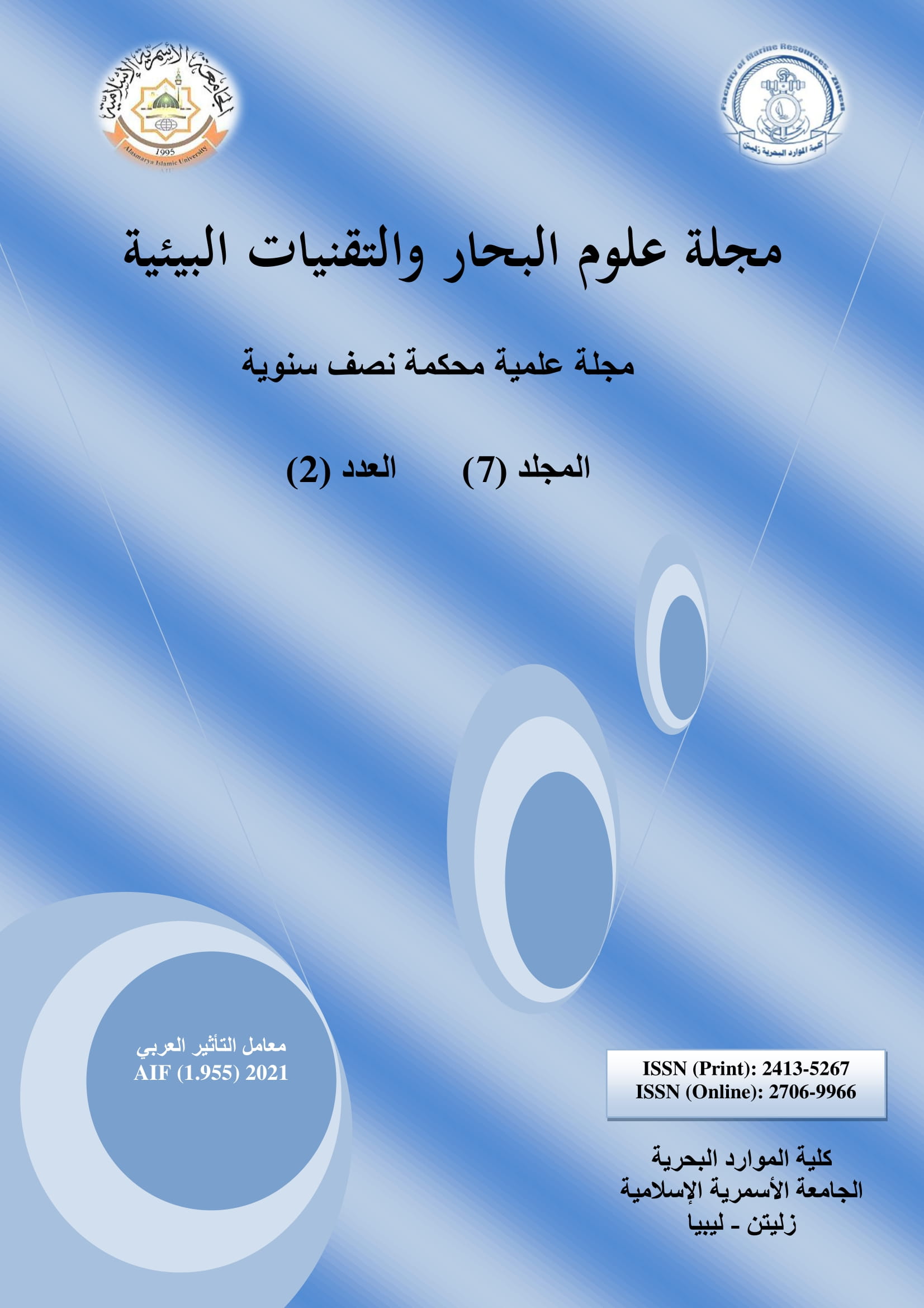الآثار الصحية للملوثات البيئية على العاملين في مصانع البلاستيك الليبية الجزء ب: بناءً على خصائص المستويات الجزيئية
DOI:
https://doi.org/10.59743/jmset.v7i2.16الكلمات المفتاحية:
الحمض النووي، الطفرات الجينية، التحليل الجزيئي، مصنع البلاستيكالملخص
تهدف هذه الدراسة إلى الكشف عن الأسباب التي أدت إلى أضرار صحية وراثية مثل الطفرات الوراثية بين العاملين في المصانع البلاستيكية بسبب الآثار البيئية السلبية. وعلاوة على ذلك، يمكن أن تشكل هذه الدراسة قاعدة بيانات أولية عن التأثير السلبي على البيئة في مصانع البلاستيك التي قد يكون لها أثر سلبي على العمال. لدراسة آثار التعرض على المدى الطويل لأبخرة البلاستيك والمذيبات الداخلة في تصنيعها والذي يظهر على محتويات DNA في الدم، تم سحب عينات دم من المتطوعين الذين يعملون في مصنع البلاستيك في مدينة قصر الأخيار، ليبيا. تم جمع ست عينات مختلفة خمسة منهم من عاملين بالمصنع ممن يتعرضوا لبخار البلاستيك لفترات مختلفة على النحو التالي، الكنترول (لم تتعرض لبخار البلاستيك)، التعرض لسنة واحدة، ثلاث سنوات من التعرض، التعرض لست سنوات، سبع سنوات واثنتي عشرة سنة من التعرض للأبخرة.
كما تم جمع عينات الدم وإجراء التحليل الجزيئي باستخدام الحمض النووي متعدد الأشكال تضخيم عشوائيا (RAPD). أجريت التحليلات الجزيئية لتقييم أثر السمية الجينية الناتجة عن التعرض لأبخرة البلاستيك على المستوى الجزيئي. على المستوى الجزيئي، تم عزل الحمض النووي DNA من المتطوعين المذكورة آنفا الستة وقد خضعت لتحليل RAPD. وأظهرت النتائج حدوث العديد من الاختلافات في السلوك التحزمي بين المتطوع الكنترول والمتطوعين الذين تعرضوا للمواد البلاستيكية وبخار المذيبات لها لفترات تعرض مختلفة. دلت هذه التغييرات في السلوك التحزمى على أن التعديل في الحمض النووي الجيني قد حدثت في شكل تعديلات في القواعد النيتروجينية في الحمض النووي DNA كاستجابة للتعرض لبخار البلاستيك لفترات تعرض زمنية مختلفة.
التنزيلات
المراجع
Alayeb S.O. (2019). Health Effects of Environmental Pollutants on Workers in The Libyan Plastic Factories, Part A: Based on Biochemical Analysis. Journal of Marine Sciences and Environmental Technologies (JMSET), 5(1): E15-29.
Kundakovic M. and F.A.Champagne (2011). Epigenetic perspective on the developmental effects of bisphenol A.Brain Behav. Immun, 25: 1084-1093.
Legzdins A.E., McCarry B.E., & Bryant D.W. (1995). Polycyclic aromatic compounds in Hamilton air: Their mutagenicity, ambient concentrations and relationships with atmospheric pollutants. Polycyclic Aromatic Compounds, 5(1-4): 157-165.
Manikkam M., C. Guerrero-Bosagna, R. Tracey, M.M. Haque and M.K. Skinner (2012). Transgenerational actions of environmental compounds on reproductive disease and identification of epigenetic biomarkers of ancestral exposures. PLoS One, 7: 93-107.
Sambrooke J., Fritsch E.F., & Maniatis T. (1989). Molecular cloning: a laboratory manual. ke-2. New York: Cold Spring Harbor Pr.
Somers C.M., Yauk C.L., White P.A., Parfett C.L., & Quinn J. S. (2002). Air pollution induces heritable DNA mutations. Proceedings of the National Academy of Sciences, 99(25): 15904-15907.
Williams J., G.K. Kubelik, K.J. Livak, J.A. Rafalski and S.V Tingey (1990). DNA polymorphisms amplified by arbitrary primers are useful as genetic markers. Nucleic Acids Res., 18: 6531-6535.
Wu S., J. Zhu, Y. Li, T. Lin, L. Gan, X. Yuan, M. Xu and G. Wei (2010). Dynamic effect of di-2-(ethylhexyl) phthalate on testicular toxicity: Epigenetic changes and their impact on gene expression. Int. J. Toxicol., 29: 193-200.
Yauk C.L. & Quinn J.S. (1996). Multilocus DNA fingerprinting reveals high rate of heritable genetic mutation in herring gulls nesting in an industrialized urban site. Proceedings of the National Academy of Sciences, 93(22): 12137-12141.
التنزيلات
منشور
إصدار
القسم
الرخصة
الحقوق الفكرية (c) 2021 مجلة علوم البحار والتقنيات البيئية

هذا العمل مرخص بموجب Creative Commons Attribution 4.0 International License.












